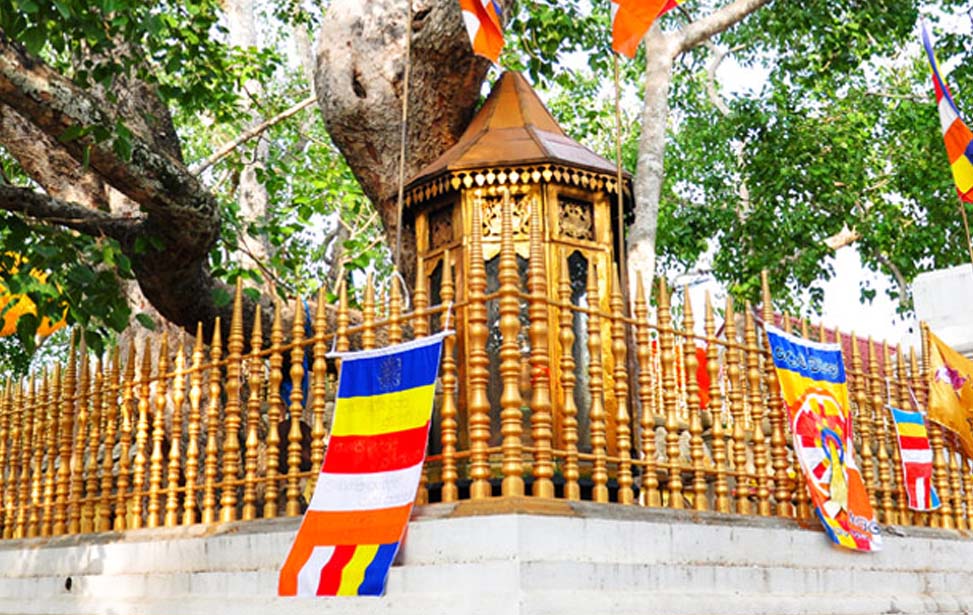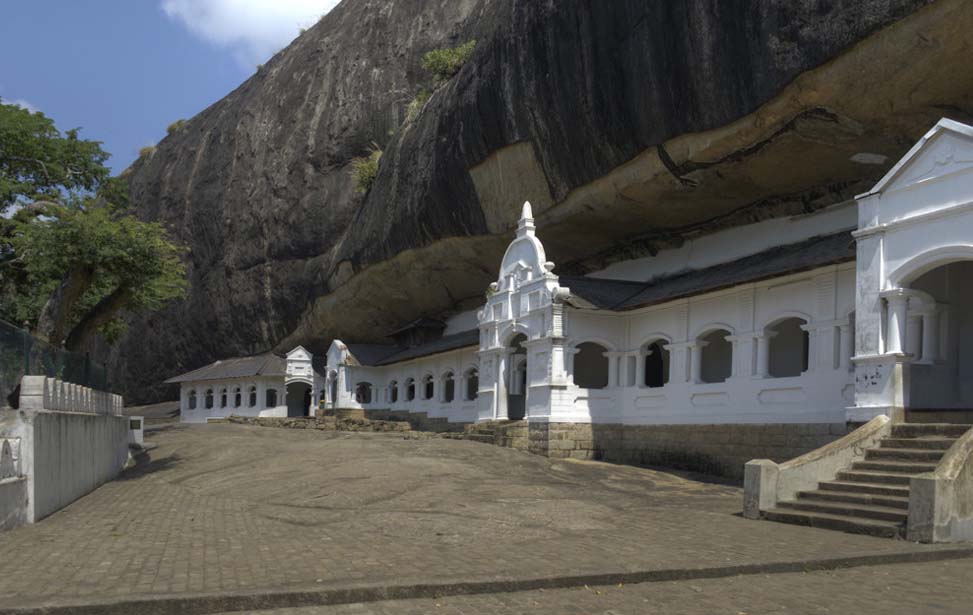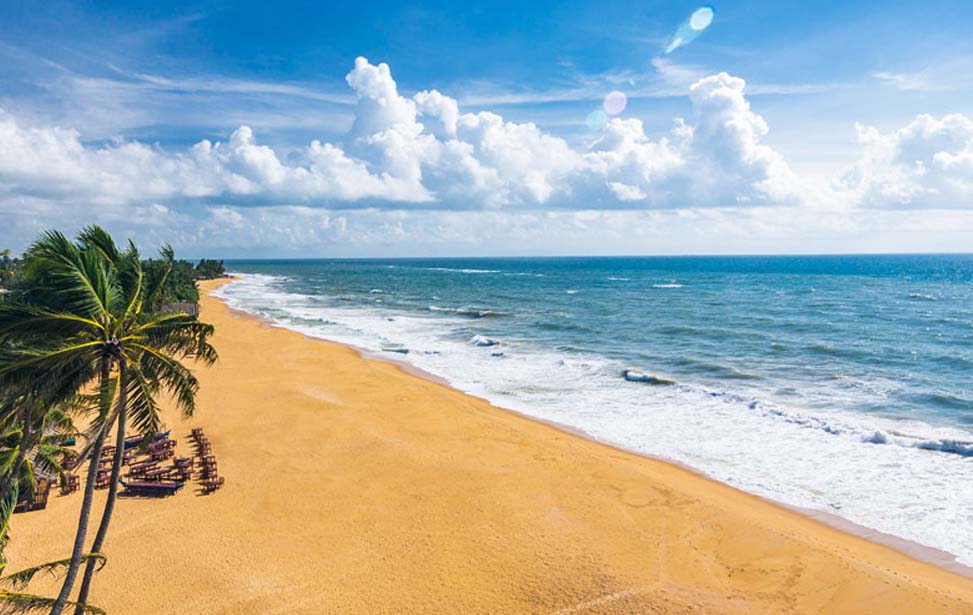

Sigiriya Rock
Sigiriya Rock is an ancient rock fortress located in the central Matale District near the town of Dambulla in the Central Province, Sri Lanka. The name refers to a site of historical and archaeological significance that is dominated by a massive column of rock nearly 200 metres (660 ft) high. According to the ancient Sri Lankan chronicle the Culavamsa, this site was selected by King Kasyapa (477 – 495 CE) for his new capital. He built his palace on the top of this rock and decorated its sides with colourful frescoes. On a small plateau about halfway up the side of this rock he built a gateway in the form of an enormous lion. The name of this place is derived from this structure —Sihagiri, the Lion Rock. The capital and the royal palace was abandoned after the king's death. It was used as a Buddhist monastery until the 14th century.

Frescoes
John Still in 1907 suggested, "The whole face of the hill appears to have been a gigantic picture gallery... the largest picture in the world perhaps". The paintings would have covered most of the western face of the rock, an area 140 metres long and 40 metres high. There are references in the graffiti to 500 ladies in these paintings. However, most have been lost forever. More frescoes, different from those on the rock face, can be seen elsewhere, for example on the ceiling of the location called the "Cobra Hood Cave".

Mirror Wall
Originally this wall was so highly polished that the king could see himself whilst he walked alongside it. Made of brick masonry wall and covered in highly polished white plaster, the wall is now partially covered with verses scribbled by visitors to the rock. The mirror wall has verses dating from as early as the 8th century. People of all types wrote on the wall, on varying subjects such as love, irony, and experiences of all sorts. Further writing on the mirror wall now has been banned for the protection of old writings of the wall.

Water Gardens
The water gardens can be seen in the central section of the western precinct. Three principal gardens are found here. The first garden consists of a plot surrounded by water. It is connected to the main precinct using four causeways, with gateways placed at the head of each causeway. This garden is built according to an ancient garden form known as char bagh, and is one of the oldest surviving models of this form.
The second contains two long, deep pools set on either side of the path. Two shallow, serpentine streams lead to these pools. Fountains made of circular limestone plates are placed here. Underground water conduits supply water to these fountains which are still functional, especially during the rainy season. Two large islands are located on either side of the second water garden. Summer palaces are built on the flattened surfaces of these islands. Two more islands are located farther to the north and the south. These islands are built in a manner similar to the island in the first water garden.
-
 Anuradhapura
Anuradhapura
-
 Kandy
Kandy
-
 Adam's Peak
Adam's Peak
-
 Sigiriya
Sigiriya
-
 Dambulla
Dambulla
-
 Polonnaruwa
Polonnaruwa
-
 Nuwara Eliya
Nuwara Eliya
-
 Yapahuwa
Yapahuwa
-
 Galle
Galle
-
 Kelaniya
Kelaniya
-
 Jaffna
Jaffna
-
 Mihinthalaya
Mihinthalaya
-
 Colombo
Colombo
-
 Trincomalee
Trincomalee
-
 Yala Park
Yala Park
-
 Udawalawa
Udawalawa
-
 Minneriya
Minneriya
-
 Wilpaththu
Wilpaththu
-
 Kumana
Kumana
-
 Wasgamuwa
Wasgamuwa
-
 Bundala
Bundala
-
 Pigeon Island
Pigeon Island
-
 Peradeniya
Peradeniya
-
 Hakgala
Hakgala
-
 Seethawaka
Seethawaka
-
 Unawatuna
Unawatuna
-
 Hikkaduwa
Hikkaduwa
-
 Arugam Bay
Arugam Bay
-
 Nilaveli
Nilaveli
-
 Beruwala
Beruwala
-
 Thangalle
Thangalle
-
 Mount Lavinia
Mount Lavinia
-
 Negombo Beach
Negombo Beach
-
 Dunhida Ella
Dunhida Ella
-
 Diyaluma Ella
Diyaluma Ella
-
 Ramboda Ella
Ramboda Ella
-
 Bopath Ella
Bopath Ella
-
 Ravana Ella
Ravana Ella
-
 Kirindi Ella
Kirindi Ella
-
 Lovers Leap
Lovers Leap


